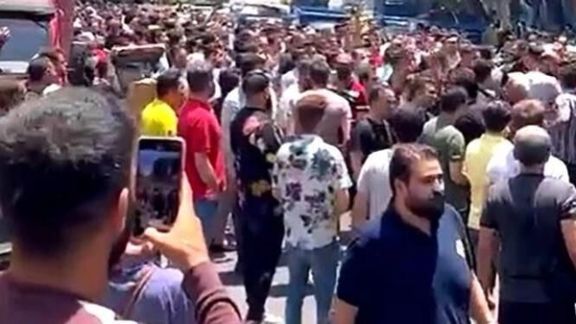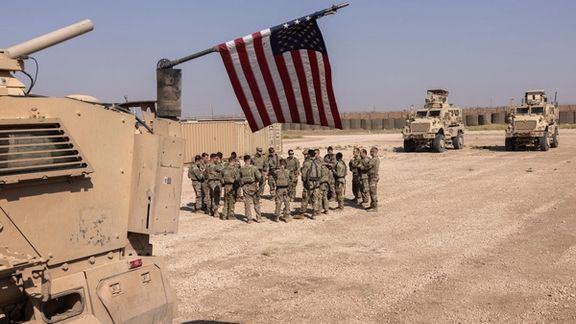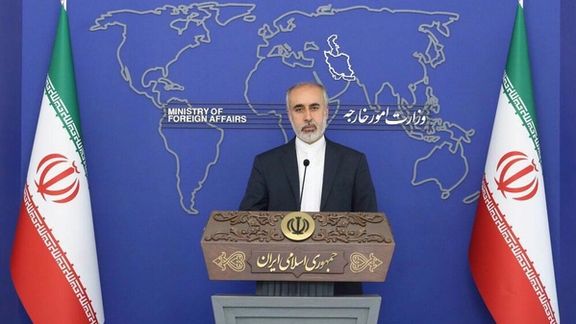Pentagon Bans Imports Of Rare Metal Tantalum From Iran, Russia, China

The US Department of Defense has finalized a ban on the acquisition of tantalum metals and alloys from North Korea, China, Russia, and Iran.

The US Department of Defense has finalized a ban on the acquisition of tantalum metals and alloys from North Korea, China, Russia, and Iran.
The US Department of Defense, which had imposed a provisional ban since October 2020, has adopted the rule as final, noting that “with some exceptions” new rules “prohibit the purchase of any regulated materials smelted or produced in any of the regulated countries (North Korea, China, Russia and Iran), or any end products manufactured in any of the regulated countries”. After a two-year period during which the department received proposals and comments on the new rules from interested parties, the department approved the final text of the amendments on Thursday.
The corresponding notice was placed in the US Federal Register and the rules came into force as of August 25.
The Pentagon said that reducing US dependence on tantalum from these four countries is a matter of national security because the rare element is an important part of the supply chain in the production of military and non-military systems used by the Defense Department.
Tantalum is a rare and hard metal that is often used to coat jet engines and other equipment exposed to extreme heat. Its heat-resistant and corrosion-resistant alloys are used in equipment for the chemical industry and heat exchangers for nuclear power systems as well as cryotrons -- a switch that operates using superconductivity and is installed in computer systems.

The latest figures reported by the Statistical Center of Iran (SCI) indicate that point-to-point inflation stood at 52.2 percent for the month ending August 22.
Point-to-point inflation compares prices in a particular month to the same period in the previous year. However, annual inflation, which compares pries in the last 12 months to the previous 12 months rose to 41.5 percent according to the report.
Although the inflation rate increase slowed slightly from the previous Iranian month, overall the pace of inflation has accelerated since May.
The report says rents, medicine, and restaurant food, as well as snack cakes and biscuits had the highest jump last month, but prices of chicken and hydrogenated cooking oil dropped slightly.
The crucial problem for Iran is the high rate of inflation in the food sector this year. The overall nationwide point-to-point annual food inflation rate in June 2022 compared with the same period in 2021 was 87 percent but the rate reached 100 percent in parts of Iran.
Most price increases happened since early May when the government scrapped a food import subsidy to save around $15 billion in foreign currency annually. The move, which the government called a ‘great economic surgery’ immediately triggered a massive rise in prices for basic food staples, such as bread, pasta, dairy products, cooking oil and meat.
Until further notice, President Ebrahim Raisi said in a televised interview following the announcement of the new policy, the government would pay monthly around 4 million rials (about $15) to 30 percent of the population at the lowest-income groups, and around 3 million to 60 percent of the population. The 10 percent at the highest income level would receive no cash handouts, he said.

Some experts have argued that if the government continues to pay the cash handouts it would reach $10 billion annually, which would mean printing more money and creating more inflation. The previous food import subsidy was based on disbursing cheaper dollars among importers, with less risk of inflation.
Economists say lower income people experience a higher rate of inflation as they spend more of their income on essential foods and often forsake anything deemed as luxury. With back-to-back high inflation since 2018, many missile class people have dropped to low-income status.
The rate of inflation for food items including staples like bread, pasta, eggs, and cooking oil affect the contents of the shopping basket of the lower income families more than those with higher income.
For instance, the two lowest income percentiles spend more than 40% of their money for food whereas this amounts to less than 17% for the highest income percentile. The discrepancy in the way that higher and lower income classes experience inflation widens the gap between the poor and the rich, economists say.
“The overall purchasing power has dropped because of [the government’s] economic reform in May. There is [an abundance] of goods in the market but people can't buy as much as they did before. Many items in people’s shopping baskets have been eliminated, reduced, or replaced with cheaper similar essential goods,” Alireza Heydari, economist, explained to Tejarat News.
The point-to-point inflation rate affecting the lowest income percentile in comparison with the highest income percentile has increased by 1.2% in the past month from 5.7 to 6.9 in the calendar month ending August 22 due to the higher share of foodstuff in the shopping basket of the lower income percentiles which includes fewer ‘non-essential’ items.

Military tensions escalated between US forces and Iranian militia in Syria as nuclear talks between Tehran and Washington seemed to be making some progress.
US attack helicopters destroyed three vehicles of Iranian militia Wednesday evening local time that had fired rockets at American forces in Syria, lightly injuring three servicemen. Three militiamen were also reportedly killed in the US retaliation.
This was the second attack on militia targets in two days, after the United States conducted an air strike Tuesday at suspected sites of militia under Iranian command, who had conducted a rocket attack on August 15 at US forces.
The foreign ministry denied any links with militias in Syria on Wednesday but accused the US of violating Syria's sovereignty and demanded the withdrawal of American forces.
CENTCOM’s issued a statement on the events indicating that Iranian-backed forces had fired multiple salvos of rockets at two sites and their vicinity.
“We are closely monitoring the situation,” said Gen. Michael “Erik” Kurilla, commander of CENTCOM. “We have a total spectrum of capability to mitigate threats across the region, and we have every confidence in our ability to protect our troops and Coalition partners from attacks.”
CENTCOM added, “The response was proportional and deliberate. The United States does not seek conflict with Iran, but we will continue to take the measures necessary to protect and defend our people.”
One senior defense official told Politico that Iran’s Revolutionary Guard (IRGC) is responsible for and directing the attacks against US targets.
It is not clear why forces under Iranian command in Syria began the military confrontation ten days ago when international talks to revive the 2015 nuclear deal, JCPOA, seemed to be making progress.
It is also not clear why the United States waited eight days to show its first response on August 23. The delay could have been related to the dynamics of the negotiations, or CENTCOM might have seen signs on the ground that more attacks were imminent.
The Iranian behavior, however, signifies a major issue with the current negotiations. The Biden Administration has focused on restoring the JCPOA that its predecessor abandoned, but critics say that Iran’s threat to the region is not just the possibility that it will build nuclear bombs, but its existing conventional and subversive threats that would remain in place even if the JCPOA is restored.
In fact, opponents both in the US, Israel and elsewhere say that a nuclear deal will immediately release tens of billions of dollars in sanctions relief and frozen assets for Tehran, which would become more empowered to bolster its non-nuclear threats to other countries.
“We’re not going to tolerate attacks by Iran-backed forces on our forces anywhere in the world to include in Syria, and we won’t hesitate to protect ourselves and take additional measures as appropriate,” said Colin Kahl, the undersecretary of defense for policy.
While this is a clear warning, Iran has heard many such statements and has continued its periodic attacks against US targets both in Syria and Iraq. Also, the US does not directly respond to attacks by Iranian proxies on its allies in the Middle East, who are mostly left to defend themselves against drone and missile attacks by Houthis from Yemen or Iran-linked groups in Iraq, Syria and Lebanon.
US forces first deployed into Syria during the Obama administration's campaign against Islamic State. There are about 900 U.S. troops in Syria, most of them in the east.

A group of American senators have expressed serious concerns over a decision which makes individuals who supported terrorist organizations eligible for immigration to the United States.
In a letter to Secretary of Homeland Security Alejandro Mayorkas and Secretary of State Antony Blinken released on Tuesday, Senator Bill Hagerty (R-TN) led his colleagues, including Ted Cruz (R-TX), Marco Rubio (R-FL), Joni Ernst (R-IA), to ask for explanation over a determination that allows individuals who provide “insignificant material support” or “limited material support” to terrorist organizations from admission into the United States.
On June 8, 2022, the Department of Homeland Security and Department of State determined that they will no longer bar such individuals, that critics say can alter immigration policy and affect the security of the United States.
“Under federal law, persons who have engaged or assisted in terrorist activities are generally ineligible to immigrate to the United States,” the senators highlighted, saying that the June 8 Determination broadly permits the admission of foreign individuals who provided material support to terrorist organizations that the Biden Administration deems insignificant or limited.
“The timing of the June 8 Determination -- nearly a year after the Administration’s botched withdrawal from Afghanistan -- also raises questions. If its intent is to ensure that Afghan refugees are able to gain asylum in the United States, there is no explanation regarding why this decision was not made months ago with prudent restrictions limiting its application to Afghan refugees,” they said, asking the administration to provide a detailed description of the Afghan nationals to whom the decision is applied and provide examples of their support for the designated terrorist organizations.

Iran has denied having any connections to the sites targeted by the United States in Syria on Tuesday, but condemned the airstrikes as a violation of Syria's sovereignty and territorial integrity.
Iranian foreign ministry spokesperson Nasser Kanaani claimed on Wednesday that "The US attack on Syrian infrastructure and people is a violation of Syria's sovereignty and territorial integrity. The sites targeted had no links to the Islamic Republic."
The US military carried out the airstrikes in Syria's Deir al-Zor against facilities used by groups affiliated with Iran's Revolutionary Guards Corps (IRGC). According to a US military spokesman, eight US fighter jets, four F-16 and four F-15E, hit nine targets. The spokesman added that there were no reports of civilian casualties.
"The president gave the direction for these strikes," said Army spokesman Colonel Joe Buccino. Central Command called the strikes a "proportionate, deliberate action intended to limit the risk of escalation and minimize the risk of casualties."
The strikes in the Deir al-Zor area came even as the United States was about to respond to a draft agreement proposed by the European Union that would bring back the 2015 nuclear deal with Iran that former President Donald Trump abandoned, and current President Joe Biden has sought to revive.
US forces first deployed into Syria during the Obama's administration's campaign against the Islamic State terror group (ISIS), partnering with a Kurdish-led group called the Syrian Democratic Forces. There are about 900 US troops in Syria, most of them in the east.
Iran-backed militias established a foothold in Syria while fighting in support of President Bashar al-Assad during Syria's civil war.

Israeli Air Force F-35 stealth fighters have repeatedly entered Iranian airspace in the past two months, according to a report by a Saudi media outlet.
The unverified report from London-based independent Arabic online newspaper Elaph said that the jets managed to evade Russian and Iranian radar during the drills, adding that Israel and the United States also carried out secret exercises over the Red Sea.
The purpose of the operations -- conducted with the US – was to simulate an aerial and maritime strike on Iran in the Red Sea as well as the seizure of Iranian warships in the Persian Gulf.
Israel has been preparing its air force – chiefly its F-35s – for possibly attacking Iran’s nuclear facilities. It has been specifically upgrading the jets so that they would not require mid-air refueling.The country's air force has also integrated a new one-ton bomb into the arsenal of weapons used by the F-35s (known in the IAF as the “Adir”) that can be carried inside the plane’s internal weapons compartment without jeopardizing its stealth radar signature.
The report comes as the United States and its allies are inching closer to an agreement over the revival of the 2015 nuclear deal with Iran, which Israel strongly opposes.
Israel’s Prime minister Yair Lapid on Wednesday condemned the deal, saying that the Jewish state "will act to prevent Iran from becoming a nuclear state.”
On Monday, Amirali Hajizadeh, the commander of Iran's Revolutionary Guard’s Aerospace Force, threatened that Tehran could "destroy” Israel, even without nuclear weapons.”